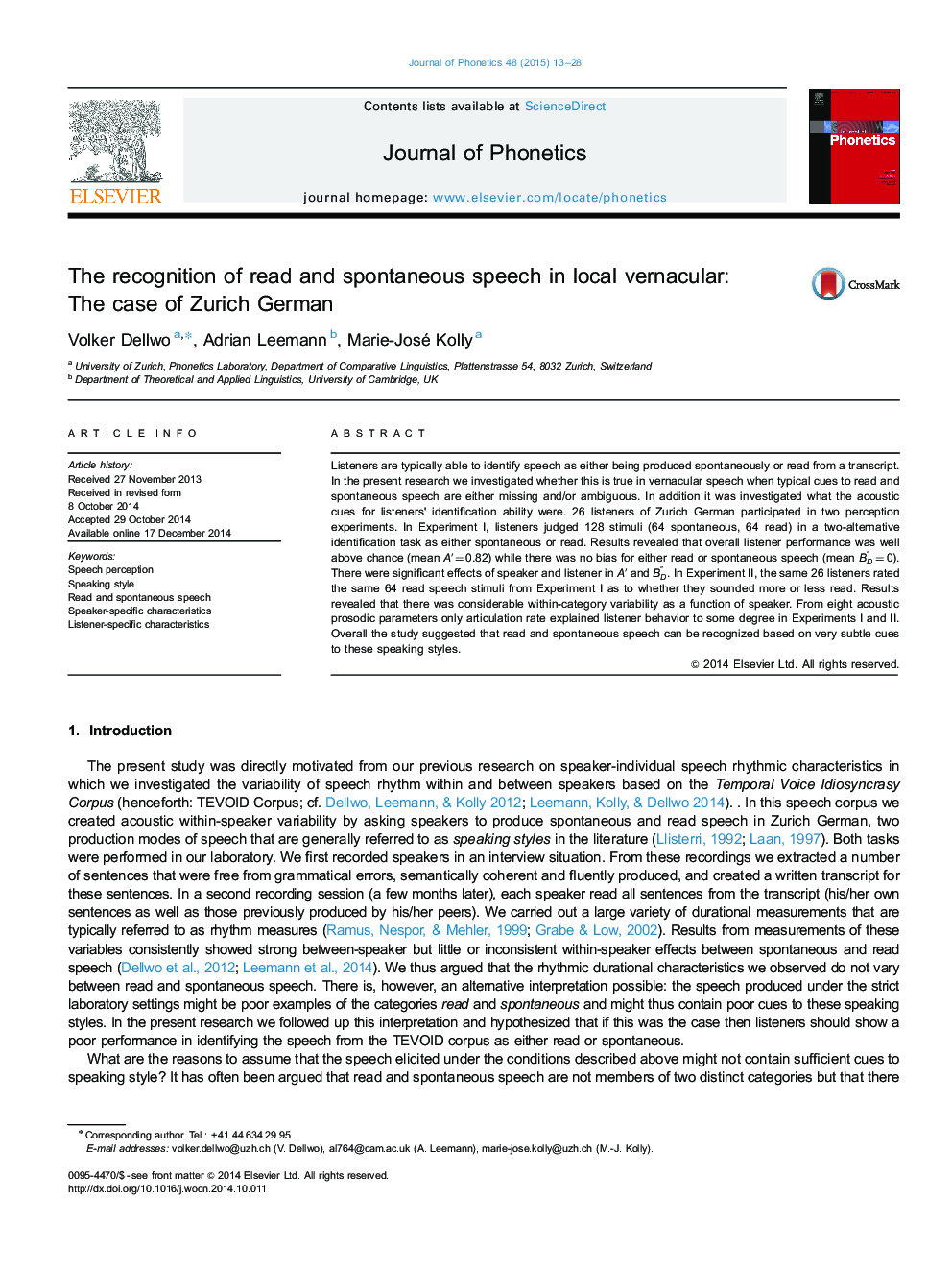| Article ID | Journal | Published Year | Pages | File Type |
|---|---|---|---|---|
| 7532931 | Journal of Phonetics | 2015 | 16 Pages |
Abstract
Listeners are typically able to identify speech as either being produced spontaneously or read from a transcript. In the present research we investigated whether this is true in vernacular speech when typical cues to read and spontaneous speech are either missing and/or ambiguous. In addition it was investigated what the acoustic cues for listeners' identification ability were. 26 listeners of Zurich German participated in two perception experiments. In Experiment I, listeners judged 128 stimuli (64 spontaneous, 64 read) in a two-alternative identification task as either spontaneous or read. Results revealed that overall listener performance was well above chance (mean Aâ²=0.82) while there was no bias for either read or spontaneous speech (mean BDâ³=0). There were significant effects of speaker and listener in Aâ² and BDâ³. In Experiment II, the same 26 listeners rated the same 64 read speech stimuli from Experiment I as to whether they sounded more or less read. Results revealed that there was considerable within-category variability as a function of speaker. From eight acoustic prosodic parameters only articulation rate explained listener behavior to some degree in Experiments I and II. Overall the study suggested that read and spontaneous speech can be recognized based on very subtle cues to these speaking styles.
Keywords
Related Topics
Social Sciences and Humanities
Arts and Humanities
Language and Linguistics
Authors
Volker Dellwo, Adrian Leemann, Marie-José Kolly,
